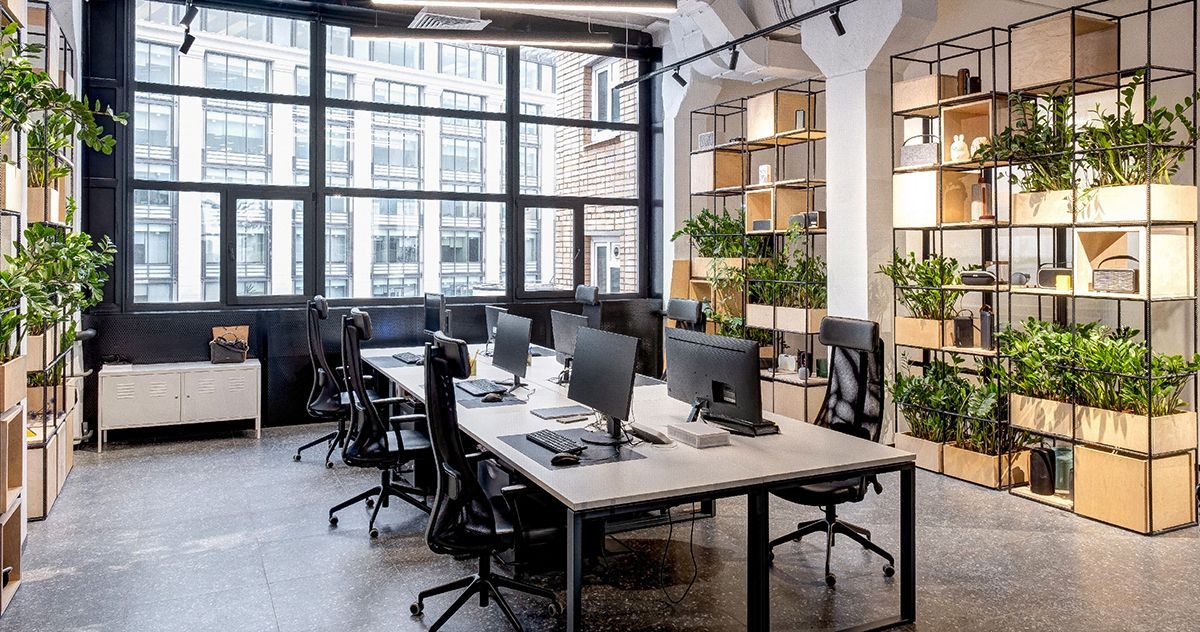In today’s fast-paced and technology-driven world, the concept of biophilic design has gained traction as a means of reconnecting people with nature in the built environment. Biophilic design seeks to enhance well-being, productivity, and creativity by integrating natural elements and patterns into interior spaces. In this blog, we’ll explore the principles of biophilic design and its transformative impact on office interiors, promoting health, well-being, and connection to the natural world.
- Understanding Biophilic Design Principles:
-
- Define biophilic design and its core principles, which are rooted in humanity’s innate connection to nature and the natural environment.
- Explore the three main elements of biophilic design: nature in the space, natural analogues, and nature of the space, each of which seeks to evoke feelings of calm, vitality, and connection with the outdoors.
- Discuss the psychological and physiological benefits of biophilic design, including stress reduction, improved cognitive function, increased creativity, and enhanced overall well-being.
- Incorporating Natural Elements into Office Interiors
- :
- Explore different ways to incorporate natural elements such as plants, water features, natural light, and organic materials into office interiors to create a sense of connection to the outdoors.
- Discuss the benefits of indoor plants for air quality, humidity regulation, and mood enhancement, and provide tips for selecting low-maintenance plants suitable for office environments.
- Showcase examples of office interiors featuring biophilic design elements, from living green walls and vertical gardens to indoor water features and daylighting strategies that maximize natural light.
- Creating Biophilic Patterns and Textures:
-
- Discuss the use of biophilic patterns and textures inspired by nature, such as wood grain, stone surfaces, leaf motifs, and natural fibers, to evoke a sense of tranquility and harmony within office interiors.
- Explore innovative materials and finishes that mimic the look and feel of natural elements, such as biophilic wallpapers, textured wall panels, and sustainable flooring options made from reclaimed wood or bamboo.
- Showcase examples of office interiors that incorporate biophilic patterns and textures to create a sensory-rich environment that stimulates the senses and promotes well-being.
- Designing Biophilic Spaces for Well-being:
-
- Explore the concept of biophilic spaces within office interiors, such as quiet retreats, green oases, and nature-inspired meeting areas, that provide opportunities for relaxation, reflection, and rejuvenation.
- Discuss the importance of creating multi-sensory experiences within biophilic spaces, incorporating elements such as natural scents, sounds of running water, and tactile materials to engage the senses and evoke positive emotions.
- Showcase examples of well-designed biophilic spaces in office interiors that encourage movement, exploration, and social interaction while fostering a sense of connection to nature and community.
- Implementing Biophilic Design Strategies for Positive Outcomes:
-
- Provide practical tips and strategies for incorporating biophilic design principles into office interiors, from simple interventions such as adding potted plants and nature-inspired artwork to more complex interventions such as architectural changes and spatial planning.
- Discuss the importance of stakeholder engagement and collaboration in the design process, involving employees, architects, designers, and facilities managers to ensure that biophilic design strategies are aligned with organizational goals and user needs.
- Showcase case studies of organizations that have successfully implemented biophilic design principles in their office interiors, highlighting the positive outcomes in terms of employee satisfaction, productivity, and well-being.
Conclusion:
Biophilic design offers a holistic approach to creating healthier, more inspiring, and sustainable office interiors that support the well-being and productivity of employees. By embracing the principles of biophilic design and incorporating natural elements, patterns, and textures into office environments, organizations can create spaces that foster creativity, collaboration, and connection to the natural world. As we look to the future of office interiors, biophilic design holds immense potential to transform the way we work and interact with our surroundings, promoting a greater sense of harmony, balance, and vitality in the modern workplace.

